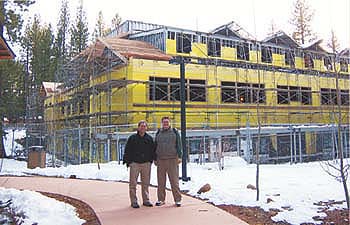All Issues
Lake Tahoe: From research to policy
Publication Information
California Agriculture 60(2):50-51.
Published April 01, 2006
PDF | Citation | Permissions
Full text
Nearly 40 years after UC Davis limnologist Charles Goldman established the Tahoe Research Group, concern over the lake's diminishing beauty culminated in the Lake Tahoe Presidential Forum. “This place is amazing. It's a national treasure that must be protected and preserved,” Vice President Gore told the forum on July 26, 1997. President Clinton then announced that he had just signed an executive order to ensure greater cooperation among the many groups working to protect the lake. Today, UC Davis and 10 affiliated research institutions as well as 19 federal, state and local agencies are participating in a concerted effort to restore Lake Tahoe's clarity.
Now called the Tahoe Environmental Research Center (TERC), the research group Goldman founded is part of the UC Davis John Muir Institute of the Environment, which is dedicated to solving environmental issues by bringing together researchers, regulatory agencies and the public. Besides serving as an umbrella for UC Davis's Tahoe research, TERC facilitates collaboration with researchers elsewhere, notably the University of Nevada, Reno; the Desert Research Institute in Reno; and the Scripps Institution of Oceanography in La Jolla. A biennial science conference on Lake Tahoe met last in 2004; five of the many studies presented are published in this issue of California Agriculture ( see pages 53 – 82 ). Its next meeting is in October 2006.
Alan Heyvaert (left) of the Desert Research Institute and John Reuter of the UC Davis Tahoe Environmental Research Center (TERC) monitor construction of a new 45,000-square-foot Tahoe Center for Environmental Sciences in Incline Village. The wetland site of the old facility, a former fish hatchery in Tahoe City, will be restored.
TERC is currently housed in a former fish hatchery in Tahoe City, Calif., an outdated facility that has only 1,000 square feet of laboratory and office space. “Charles Goldman used to say, ‘We're doing first-class research in a third-class facility’,” says Heather Segale, TERC education and outreach coordinator.
But soon the researchers will also have a first-class facility, the Tahoe Center for Environmental Sciences, a joint project between UC Davis and Sierra Nevada College that is scheduled to be completed in August 2006 in Incline Village, Nev. Designed to be environmentally friendly, with features including plenty of natural light and solar panels, the 45,000-square-foot center also has ample common space to foster collaboration and the exchange of ideas among researchers.
For the first time, agencies are now coordinating their 20-year plans for Lake Tahoe
To help inform policy, UC Davis and its affiliated institutions formed the Tahoe Science Consortium, which in August 2005 signed an agreement to work more closely with the federal and state resource-management agencies responsible for protecting Lake Tahoe. “At the science end, all the scientists will report to a representative board; the same is true at the policy end,” Segale says. “Then the two boards will get together so the policymakers can ask key management questions, and the scientists can provide answers and direct research.”
The agencies are also working more closely with each other, in a process called Pathway 2007. The main agencies overseeing Lake Tahoe are the Tahoe Regional Planning Agency, which was created by Congress in 1969 to regulate development on both the California and Nevada sides of the lake; the USDA Forest Service; the Lahontan Regional Water Quality Control Board, which is responsible for water quality on the California side; and the Nevada Division of Environmental Protection, which is responsible for water quality on the Nevada side.
Adding to the mix, this spring UC will hire a Cooperative Extension natural resource advisor to conduct programs in the basin.
“For the first time, agencies are now coordinating their 20-year plans for Lake Tahoe,” Segale says.





